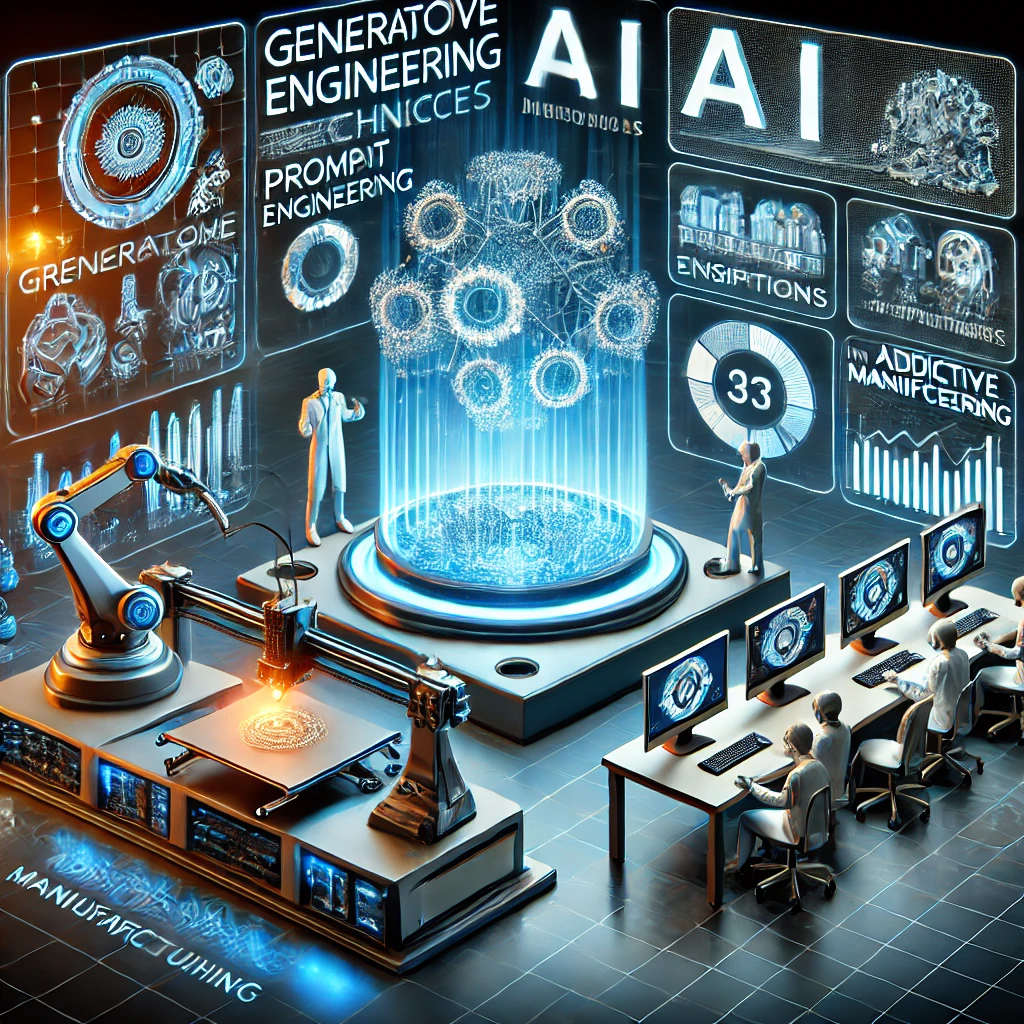Practical Implementation Guides
BeginnerThese tutorials provide practical guidance on implementing generative AI solutions across different aspects of the additive manufacturing workflow. From prompt engineering to model selection and evaluation, you'll find step-by-step instructions to help you successfully integrate GenAI capabilities into your AM processes.
What You'll Learn:
- Effective Prompting: Techniques to effectively communicate with GenAI models for AM-specific tasks
- Model Selection: How to choose the right AI models for different AM applications
- Implementation Strategies: Step-by-step guides for integrating GenAI into existing workflows
- Evaluation Methods: Approaches to measure and validate GenAI performance in AM contexts
Prompt Engineering for AM
BeginnerPrompt engineering is the practice of crafting effective inputs for generative AI models to produce desired outputs. In additive manufacturing, well-designed prompts can help you generate optimized designs, simulate processes, and solve complex manufacturing challenges.
Basic Prompting Techniques
Learn fundamental strategies for creating clear, effective prompts that produce consistent results for AM applications.
Learn MoreDomain-Specific Prompting
Discover how to incorporate AM-specific terminology and constraints into your prompts for better results.
Learn MoreIterative Prompting
Master the art of refining prompts through feedback loops to progressively improve generated designs and solutions.
Learn MoreBenchmarking GenAI in AM
IntermediateBenchmarking is essential to evaluate the performance of generative AI models in additive manufacturing contexts. Effective benchmarking helps you select the right models, measure improvements, and ensure that AI-generated solutions meet your manufacturing requirements.
Performance Metrics
Understanding the right metrics to evaluate AI performance in AM contexts is crucial for meaningful benchmarking. Key metrics include:
- Design quality and manufacturability
- Optimization effectiveness
- Processing time and computational efficiency
- Material usage optimization
- Defect prediction accuracy
Benchmarking Tools
Various tools and frameworks can help you systematically evaluate GenAI performance in AM applications:
- Standard test cases and reference designs
- Automated evaluation pipelines
- Comparative analysis frameworks
- Simulation-based validation methods
- Real-world validation protocols
Model Selection for AM Applications
IntermediateChoosing the right generative AI model for your specific additive manufacturing application is critical for success. This guide helps you navigate the landscape of available models and make informed decisions based on your requirements.
Selection Criteria
Consider these factors when selecting generative AI models for AM applications:
- Task Alignment: How well the model's capabilities match your specific AM task (design generation, parameter optimization, etc.)
- Domain Specialization: Whether the model has been pre-trained or fine-tuned on AM-relevant data
- Resource Requirements: Computational resources needed to run the model effectively
- Integration Capabilities: Ease of integrating the model with existing AM software and workflows
- Customization Options: Ability to fine-tune or adapt the model to your specific needs
Design Generation Models
Models specialized in creating 3D designs and optimized structures for AM.
Process Optimization Models
Models focused on optimizing print parameters and manufacturing processes.
Quality Control Models
Models designed for defect detection, prediction, and quality assurance in AM.
Implementation Guides
AdvancedThese advanced guides provide detailed, step-by-step instructions for implementing generative AI solutions in specific AM contexts.
Step 1: Environment Setup
- Configure computational resources and dependencies
- Install necessary libraries and frameworks
- Set up integration points with existing AM software
Step 2: Model Preparation
- Select or download appropriate pre-trained models
- Configure model parameters for your specific use case
- Prepare any necessary fine-tuning datasets
Step 3: Integration and Testing
- Connect models to your AM workflow
- Develop necessary interfaces and automation
- Test with representative use cases
- Iterate based on performance feedback
import torch
from transformers import AutoModelForCausalLM, AutoTokenizer
# Load pre-trained model for design generation
model_name = "am-design-generator-v1"
tokenizer = AutoTokenizer.from_pretrained(model_name)
model = AutoModelForCausalLM.from_pretrained(model_name)
# Generate a design based on requirements
def generate_design(requirements, max_length=1000):
inputs = tokenizer(requirements, return_tensors="pt")
outputs = model.generate(
inputs.input_ids,
max_length=max_length,
temperature=0.7,
top_p=0.9,
do_sample=True
)
design_description = tokenizer.decode(outputs[0], skip_special_tokens=True)
return design_description
# Example usage
requirements = """
Design a lightweight bracket for a 3D printer with the following specs:
- Must support 5kg load
- Maximum dimensions: 10cm x 5cm x 3cm
- Material: PLA
- Optimize for minimal material usage
"""
design = generate_design(requirements)
print(design)Evaluation Methods
AdvancedProper evaluation is essential to ensure that generative AI solutions meet the requirements and constraints of additive manufacturing. These advanced methods help you rigorously assess AI performance in AM contexts.
Comprehensive Evaluation Framework
A holistic approach to evaluating GenAI in AM should include:
- Technical Performance: Accuracy, precision, computational efficiency
- Manufacturing Viability: Printability, structural integrity, material usage
- Business Impact: Cost reduction, time savings, quality improvements
- User Experience: Ease of use, integration with existing workflows
- Compliance: Meeting industry standards and regulatory requirements
Ready to Apply These Concepts?
Explore our real-world case studies to see how these implementation approaches have been applied in industry settings:
